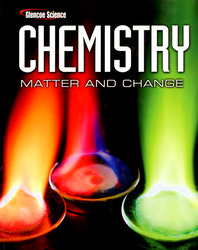1 A) rate constant B) average reaction rate C) activated complex D) chemical reaction 2 A) temperature B) kinetic energy C) activation energy D) potential energy 3 <a onClick="window.open('/olcweb/cgi/pluginpop.cgi?it=jpg::::/sites/dl/free/007874637x/514712/figure_16_2_page_561_2008_CMC.jpg','popWin', 'width=499,height=314,resizable,scrollbars');" href="#"><img valign="absmiddle" height="16" width="16" border="0" src="/olcweb/styles/shared/linkicons/image.gif"> (60.0K)</a> A) -0.0300 mol/Ls B) 0.0300 mol/Ls C) 0.300 mol/Ls D) -0.300 mol/Ls 4 <a onClick="window.open('/olcweb/cgi/pluginpop.cgi?it=jpg::::/sites/dl/free/007874637x/514796/fig16_4.jpg','popWin', 'width=NaN,height=NaN,resizable,scrollbars');" href="#"><img valign="absmiddle" height="16" width="16" border="0" src="/olcweb/styles/shared/linkicons/image.gif"> (44.0K)</a> A) incorrect orientation B) insufficient energy C) both a and b D) none of the above 5 A) The reaction speeds up. B) The reaction slows down. C) The reaction stops. D) The reaction rate does not change. 6 A) reactant B) product C) catalyst D) inhibitor 7 A) homogeneous catalyst B) heterogeneous catalyst C) solid-state catalyst D) ephemiral catalyst 8 A) instantaneous rate B) concentration C) specific rate constant D) reaction order 9 2 [C]3 A) first order for A, first order for B, first order for C B) first order for A, second order for B, first order for C C) first order for A, second order for B, third order for C D) first order for A, second order for B, second order for C 10 A) method of final rates B) method of instantaneous rates C) method of initial rates D) method of experimental rates 11 2 [T]2. What will be the result of doubling the concentration of Q?A) rate doubles B) rate halves C) rate triples D) rate quadruples 12 A) 12 M/s B) 1.2 M/s C) 0.12 M/s D) 0.012 M/s 13 A) liters per mole per second B) moles per liter per second C) seconds per liter per mole D) seconds per mole per liter 14 A) complex steps B) elementary steps C) intermediate steps D) rate-determining steps 15 <a onClick="window.open('/olcweb/cgi/pluginpop.cgi?it=jpg::::/sites/dl/free/007874637x/514712/figure_16_20_page_582_2008_CMC.jpg','popWin', 'width=487,height=367,resizable,scrollbars');" href="#"><img valign="absmiddle" height="16" width="16" border="0" src="/olcweb/styles/shared/linkicons/image.gif"> (51.0K)</a> A) the first B) the second C) the third D) none of these





